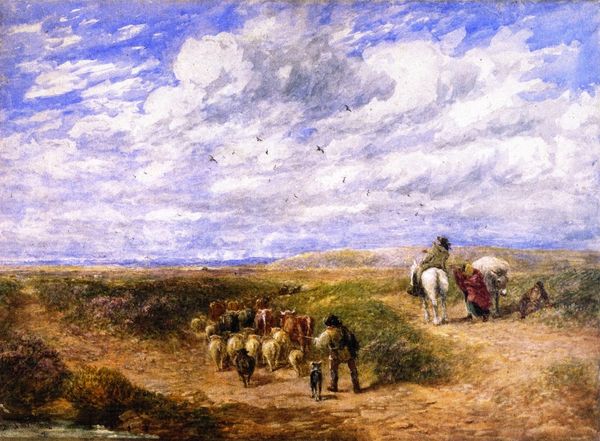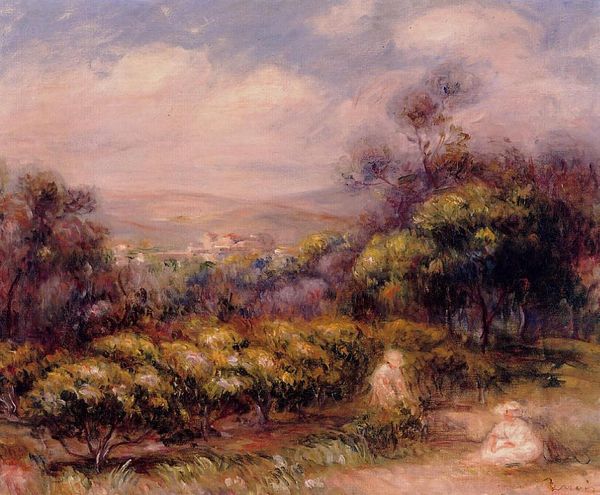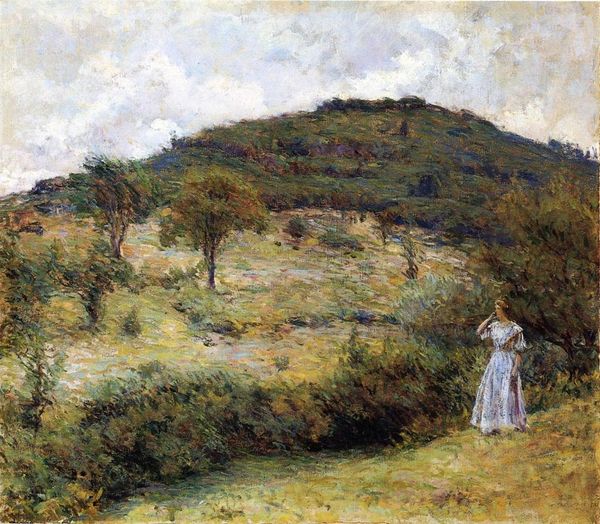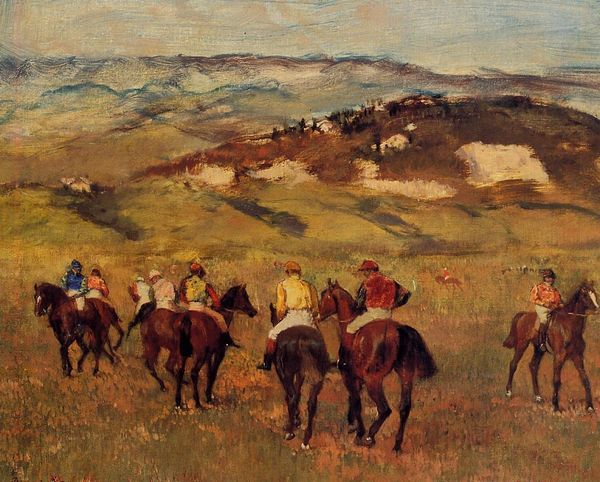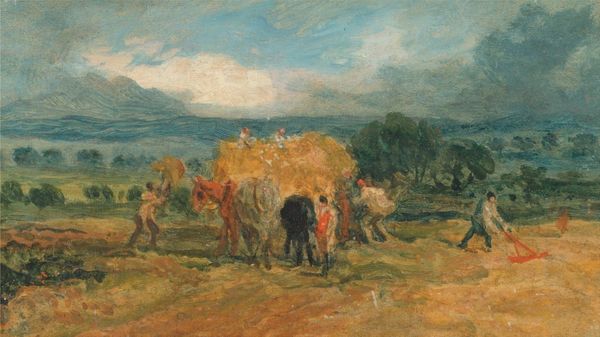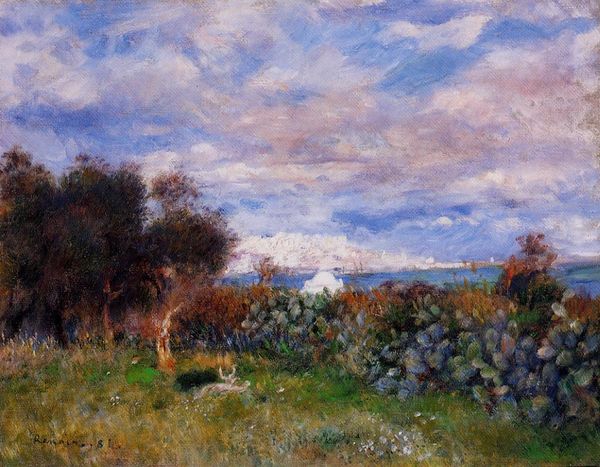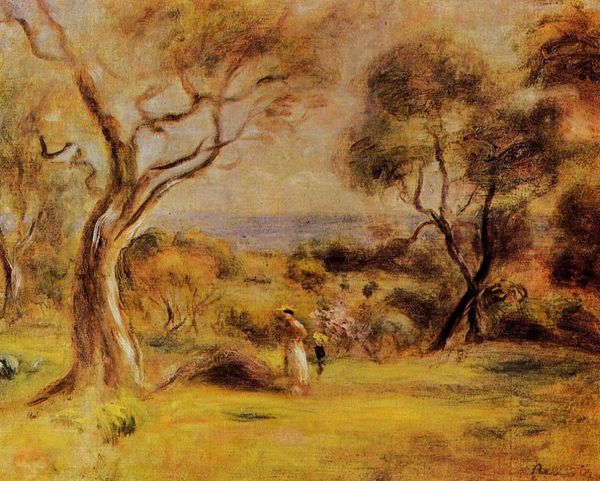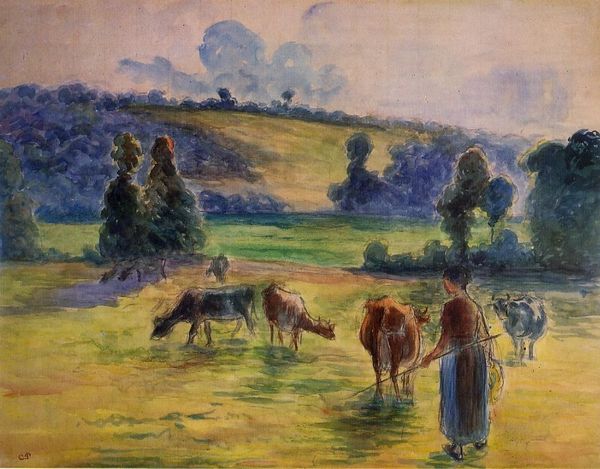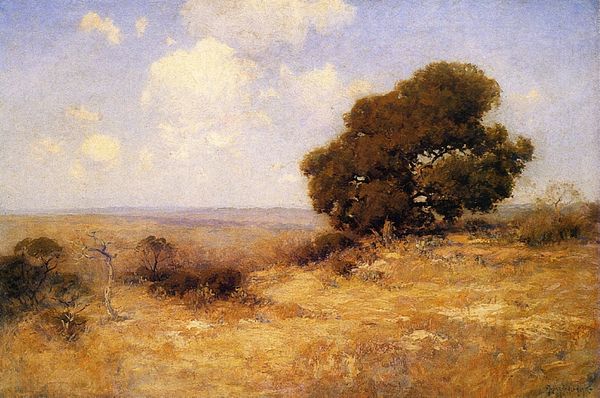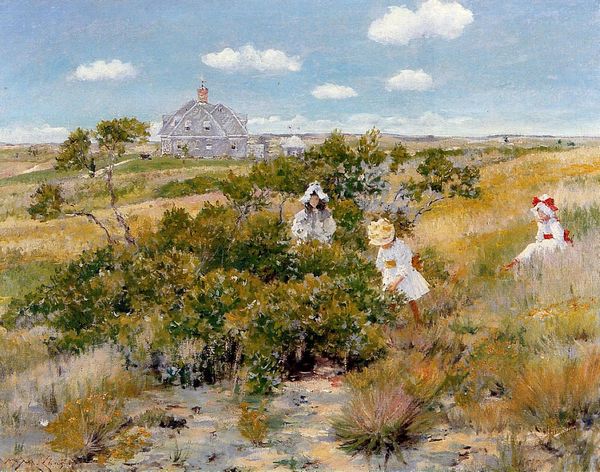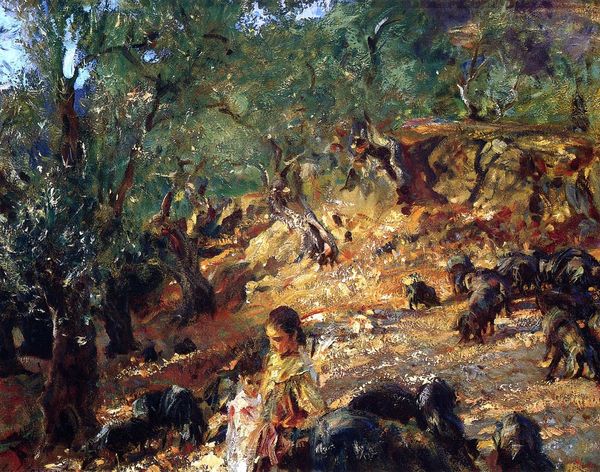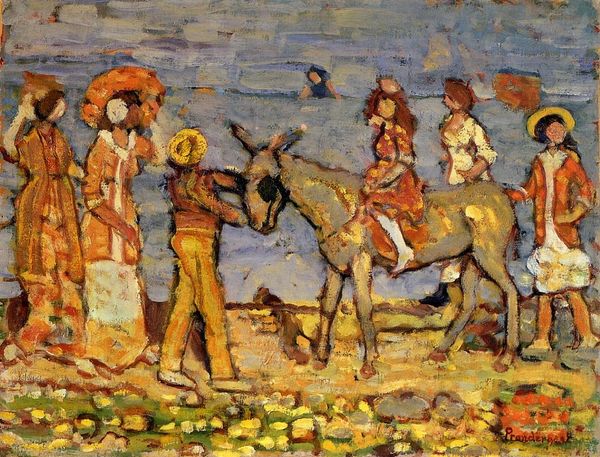
painting, oil-paint
#
sky
#
painting
#
impressionism
#
oil-paint
#
landscape
#
impressionist landscape
#
oil painting
#
seascape
#
genre-painting
Copyright: Public domain
Curator: Here we have Renoir’s painting "Arabs by the Sea," an evocative example of his exploration of genre scenes. Editor: My immediate reaction is to the shimmering quality of light – it feels unfinished, almost like a sketch, yet captures a fleeting moment with real vibrancy. Curator: Precisely. Consider Renoir’s technique. The loose brushstrokes and the way the oil paint is applied capture the effects of light and atmosphere. It draws us to his engagement with Impressionism and its emphasis on fleeting moments. How do you read the "Arabs," their positioning within this sea space? Editor: It seems their figures become almost integrated within the land, an effect that highlights both the local inhabitants but also speaks of a certain romantic exoticism that would have appealed to Renoir’s French audiences. The sea as backdrop lends itself to an escapist vision. How would it have been viewed at its time? Curator: You are right. This romanticized depiction participated in a broader trend of Orientalism within European art during the 19th century. What's interesting is Renoir's move to depict working class in Paris, and later his "exotic" paintings, seemingly feeding public appetite for views that otherize these populations. How does this work resonate with broader impressionistic values beyond this painting being aesthetically interesting. Editor: I agree with the public sentiment of this exotic taste, Renoir also creates works such as these for himself. His landscape background, when contrasted with the detailed figure of his foreground, offers a social perspective that values cultural experiences. Curator: An important reflection about the exchange between the production means for artistic development and market appeal. In looking at the legacy of this work in our present, there's an important tension to recognize between artistic expression, socio-political framing, and commercialized exoticism. Editor: Absolutely. It leaves us pondering how tastes and their production intersect with labor, cultural consumption and the power structures within society at the time, doesn't it? Curator: Yes. It underlines art’s position within social, cultural, and institutional spheres as well as opens a window into understanding art as a social production.
Comments
No comments
Be the first to comment and join the conversation on the ultimate creative platform.
